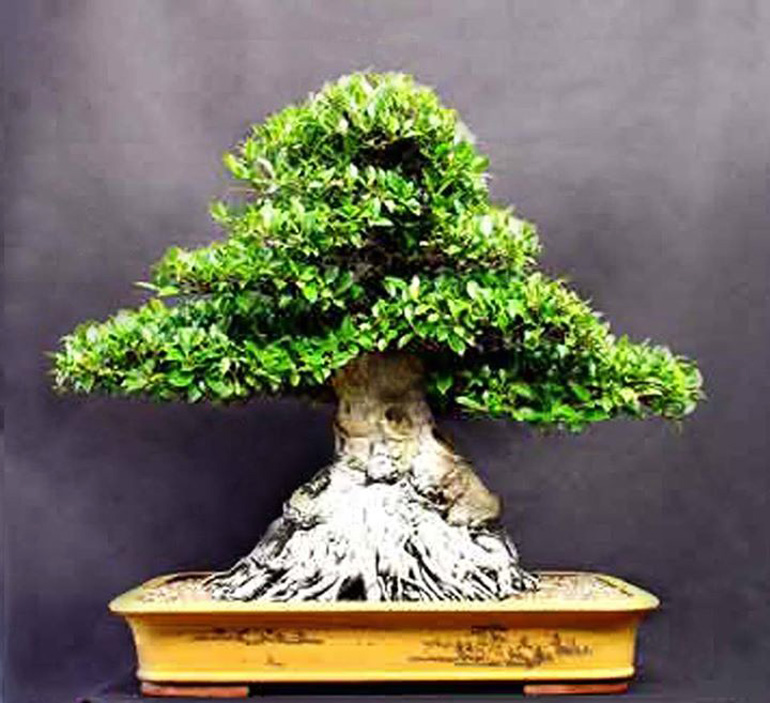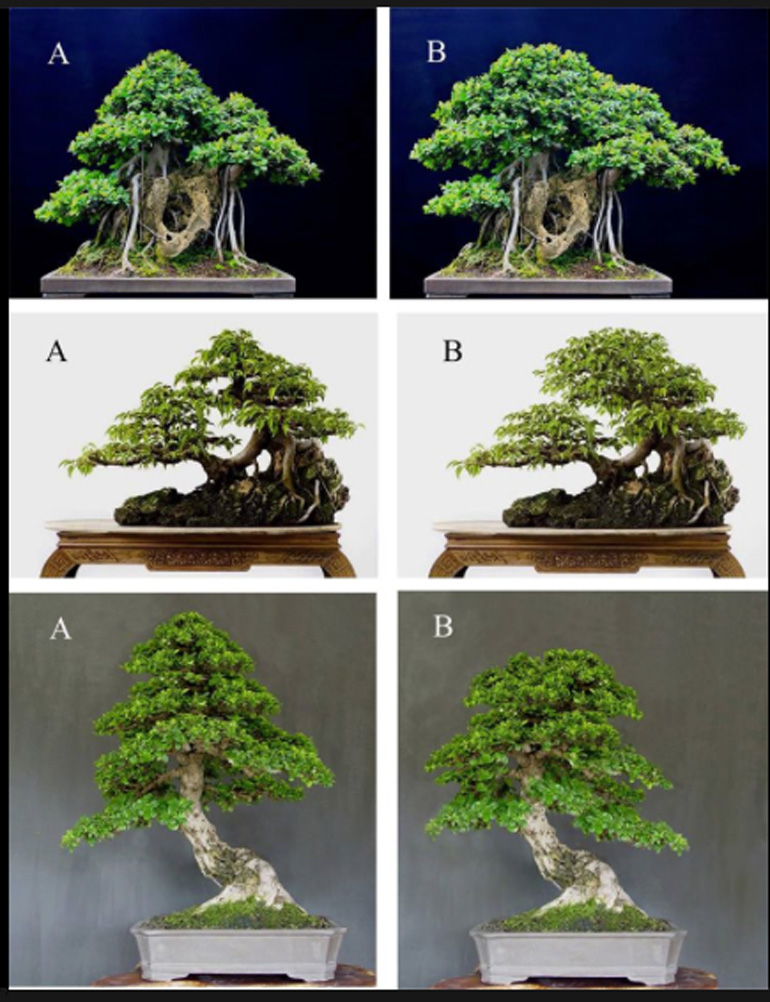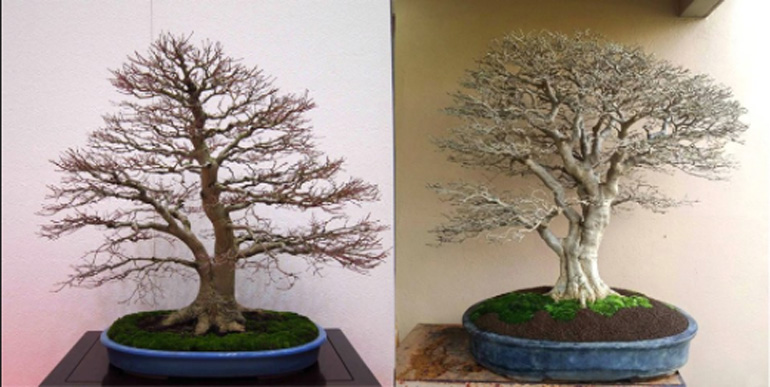
This sturdy little Ficus may (or may not) have a problem.
Is there anything wrong with the trees shown here? Robert Steven, world famous bonsai artist, teacher and author thinks so. In his own words: “Have you ever made the same mistake I did on my deciduous/broad leaf/ tropical bonsai? …..and what are they?
(Don’t be ashamed, they are common mistakes being taught all over the world).”
Take a look at the trees shown here. Start at the top and look at the first four photos. Is there something wrong? If you can’t find what’s wrong (according to Robert at least) then look at the last two photos. If you still don’t see it, check the links just below.
All the photos shown here appear on Robert Steven’s facebook feed and on Komunitas Seniman Bonsai Indonesia (Indonesian Bonsai Artists Community).

None of the trees are identified, nor are the artists. I imagine this is because these are not germane to the issue at hand. Nevertheless, it's plain to see that this is a remarkably beautiful and well balanced Buttonwood. But what's wrong?

The photo is a little bleached out, but I'm guessing this lovely tree, with its remarkable base and beautiful pot, is another Ficus.

And yet another Ficus. This time it's all about taper (and something else?).

Robert's point is illuminated with these four trees...

...and with these two deciduous trees.

Want to know more? When it comes to the aesthetics behind bonsai design, Robert's Mission of Transformation will hold you in good stead.
Hello Wayne,
Im sorry ,but I do not have a facebook account and do not wish one. So, I am unable to see what it is that’s so wrong with these trees. I do see some design problems with a few but, Im not sure what the author means in his view. Can you please tell me what it was that he saw and what the point was to the mistake. I have much to learn and read your posts everyday. Can you help me understand? I very much appreciate your work Wayne.
Thanks-Darren
The only thing I do not like is that the trees shown here are all styled like coniferous. I mean the foliage and the angles of main branches.
…and sure, they are sitting right in the middle of their pots.
The only common thing I can register is that they all are styled like coniferous trees. I mean the angles of main branches where they leave the trunks, bent too downwards. The trees are all sitting right in the centre of their pots, but some are round so this should not be the issue.
…and the single-branch top of the tree as well, not natural for broadleaved trees.
I agree. Why not tell us what Robert Steven thinks?
I think (and may be totally wrong) that some of the trees are styled in the typical triangular shape of Japanese pines and deciduous trees don’t grow that way (tend to be more broom or rounded crown shape.)
Pieter,
I guess I thought it would be more interesting if I didn’t tell you.
Hi Darren,
Maybe I’ll do a follow up with more information.
They are styled as if they are evergreens. I haven’t ever seen a broadleaf tree in Nature grow in that way.
Your next series of trees (A,B), the center of the tree is the focal point, that is where my eyes go first, instead of seeing the piece as a tree.
Thanks to Wayne for sharing. See the complete post here with photo examples :
https://www.facebook.com/groups/721360507936301/permalink/882361521836198/
And here for those who don’t have FB :
“Deciduous vs Conifers”
If there is any “fault list” in bonsai art, one I can think of is to design tropical/ broad leaves/ deciduous bonsai like conifers; and it’s sad that this “mistake” is still being taught and practiced all over the world.
Not for right or wrong reason, but they are all about plant physiology and morphology that make the distinctive different between tropical/ broad leaves/ deciduous and conifers on their structures and characters.
The main difference which becomes very important to bonsai design is the “apical dominant” of conifers and only found very few exceptions on deciduous tree, unless they are still young. The apical dominant feature is not only on the trunk line but also on the branch structure. Consequently, conifers tend to grow in monopodial form with apical crown shape unless being influenced by external factors from nature, and the ramification structure is different from deciduous tree that tend to grow wider.
As most of us learn bonsai from Japanese oriented sources, and they are mostly for conifers (not many tropical bonsai in Japan), so most of the technique do not fit to design tropical/ deciduous/ broad leaves bonsai, specifically on the ramification structure and crown shape where we are always taught to make a triangular shape with single line to form the apex. Only young deciduous trees grow in apical shape with very few exceptions, but old deciduous tree will always grow wider in sympodial structure with “non” apical dominant ramification structure as conifers do.
So we are not suppose to design our deciduous bonsai in such way, but we can design our conifers like deciduous. Why ? Because when the apical meristerm of conifers are disturbed (e.g. by ice balls, strong wind etc.), then the structure will change and transform the tree shape. This is what I refer to the morphological aspect.
Another common “mistake” is the technique to make a bonsai look older by bending the branch downward. It is true that the branches of old tree will bend down, but once again, many people are using the technique for deciduous by bending down the branch from the very beginning point that form a sharp 45 degree angle on the lower part. This only happens in pines; the branches of deciduous tree will always grow upward from the beginning, when they get older then will bend downward but keep the angle on the upper part.
These are the “mistakes” which always make deciduous bonsai look like a pine or conifers.
Thanks Robert
This is very helpful